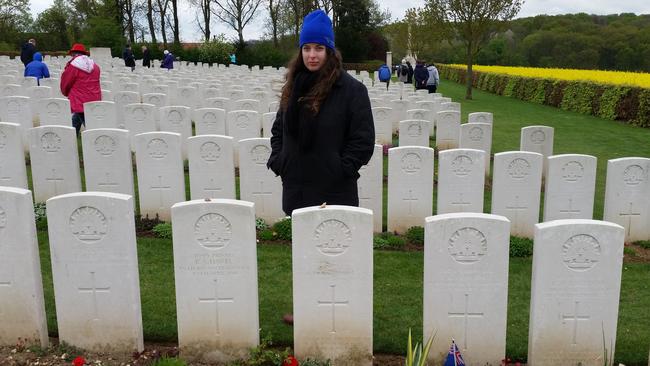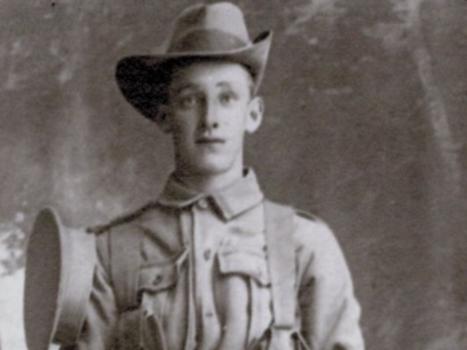Researching the stories of Aussie Diggers turns World War I into a personal affair
AN Anzac Day trip to France became more than an assignment for reporter Alesha Capone, who got to know the stories of some of the Melbourne men who served in World War I.

North West
Don't miss out on the headlines from North West. Followed categories will be added to My News.
AFTER researching the history of many Brimbank Diggers who served in World War I for Leader’s Anzac centenary coverage, some of their names remain etched into my memory.
As I was conducting this research as a journalist, I was also preparing to take three weeks leave to fly to France, to commemorate the 100th anniversary of Anzac Day at the Australian national memorial in the Villers-Bretonneux Military Cemetery.
Knowing the stories behind some of the men from Brimbank who served in this part of France, I wanted to pay my respects at the annual dawn service.
Before my trip I spent weeks combing through war records, speaking to the volunteers from Brimbank’s historical societies and interviewing descendants of the war veterans, before writing some articles about the area’s Anzacs.
As a result, and without meaning any disrespect, I had started to think of these men by their first names.


To me, these heroes of the past were not just defined by their army ranks and serial numbers — they were James from Sydenham, Thomas from Keilor and Charles from Sunshine, just to name a few.
In the official Australian war documents, these men were Private James “Jim” Grogan of the 21st Battalion, a teenager who died after being hit by machine gun fire in the battle for the Pozieres Windmill site in France in July 1916.
Charles Alan Harris, 30, from the 7th Battalion survived Gallipoli but was killed in action in France in February 1917.
Private Thomas Evan Farr was just 21 when he was killed in action in France and buried by his fellow soldiers, between the villages of Villers-Bretonneux and Amiens during April 1918.
Thomas’ friends placed a wooden cross at the site, and later his body was — like thousands of other fallen soldiers — repatriated to the nearby Adelaide Cemetery.
After interviewing Thomas’s nephew, Keilor’s David Milburn, I knew Tom was greatly missed by his sisters, mother and father.
Thomas’s remains were buried in the same row of graves as Australia’s famous Unknown Soldier.
After I attended the dawn service at the Villers-Bretonneux memorial along with about 6000 other Australians on Anzac Day, I also visited the Adelaide Cemetery.
On a headstone, in a peaceful area surrounded by grassy paddocks and fields of canola, the words etched upon Thomas’s final memorial said he was the lost, beloved son from Keilor, Victoria.
After a few moments of reflection, I said a prayer of thanks and left Thomas lying under the French sky.

Earlier that day, during the Anzac dawn service, I had seen the enormous official Australian memorial pavilion upon which the two other Brimbank soldiers, James and Charles, had their names inscribed to commemorate their deaths.
Neither of the young men’s bodies, buried by fellow soldiers on the battlefields, were found after the war — and so they have no known final resting place.
At the Anzac ceremony, as I sat under a black sky and pouring rain at 4.30am, I thought about these men and the people they had left behind in Australia.
I was surrounded by thousands of my “Aussie” compatriots, clutching poppies and Australian flags beneath plastic ponchos and umbrellas, as we solemnly waited for proceedings to start despite the downpour.
The wait was not pleasant, but I believe we were all thinking the same thing: if we were frozen and drenched, imagine the conditions faced by those in the trenches of WWI when enemy fire rained down and young men did not know if they would see the next day.
As the ceremony got under way, I could not individually thank the 10,773 missing and dead soldiers from the Australian Imperial Force whose names were inscribed upon the memorial pavilion, after their bodies were never found post-battle.
Instead, as hymns were sung and speeches given by Australian and French dignitaries, I silently thanked the Brimbank men whose names I will always remember: Thomas, James and Charles. Lest we forget.



